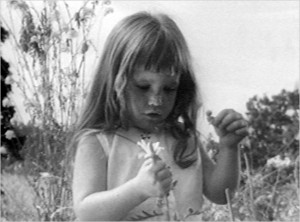February 17, 2012
I want to introduce you to an article that, on the surface, may seem an odd choice to highlight here. However, before excerpting these few paragraphs, let me explain:
The media giant whose famous ’64 Daisy ad is cited as a primary example–Tony Schwartz–was my mentor in grad school. And it was from him that I learned many important lessons. Here is one more.
[Following excerpted from article by Angela Martinez published in The Lamp/Projects on Media on Feb. 8, 2012]
Is Media Literacy the Study of Nothing?
I’ve been wondering–what makes media literacy such a powerful and tricky practice?
That’s when I realized that being media literate involves a whole lot of nothing. Literally, no thing. I don’t mean in a Buddhist “Everything is no thing” kind of way. (I wouldn’t go from zero to zen on our first blog trip together.) It’s that reading media messages requires noticing what’s not the thing we’re supposed to be noticing. What are you not seeing, hearing, reading? Who’s been left out? Or at least pushed to the sidelines? It’s much like the concept of negative space in art which… [is] “the area around the primary objects in a work of art is known…, while the space occupied by the primary objects is known as positive space” [Getty Museum].
In this iconic 1964 Lyndon B. Johnson presidential campaign commercial, the camera is trained on a little girl counting the petals of a daisy she’s plucking. The negative space here is the sky around her head, possibly also the trees and flowers. Since the girl takes up much of the positive space, she’s more important than anything else in the frame. Now if we go a step further in identifying the negative space, we could say it includes adults, the city, all that isn’t children or nature. Take that one step further and consider what children and nature mean: purity, innocence, goodness, that which we want to protect.

Still from the 1964 Lyndon Johnson campaign ‘daisy ad,’ created by Tony Schwartz
So what is not in the picture increases the importance, and the value, of what is in the picture. Once she’s counted to ten (not exactly in order, but she’s multi-tasking so we’ll cut her some slack), a male voice begins an eerily familiar countdown. The camera zooms into the girl’s eye and dissolves into the harrowing silhouette of a mushroom cloud. While the explosion is the primary object in that frame, it’s contrasted with the primary object first established–the simple sweetness of a little girl in a field of daisies, the picture of innocence, peace, hope. Even without the soundbites of Lyndon B. Johnson and narration giving the political context, the message is clear. Daisy girl, and those who prioritize her: good; atom bomb, and the threat of nuclear war: way bad.
In a mass media universe, the primary objects tend to be the people, ideas and practices that align with the dominant culture. In this case, a little white girl picking daisies illustrates purity and innocence. Now, what if this little girl was black? Or in a wheelchair? Would we only think “innocent” or would we also think “poor” or “helpless?” And how might that influence the impact of the message?
And whereas in artistic terms, the “negative” in “negative space” doesn’t necessarily mean derogatory, in a mass media context, by repeatedly making someone or something missing or secondary, we convey that the person or thing is less valuable, less desirable, or just doesn’t belong.
Until we acknowledge what’s missing in the messages and images we encounter every day, those people, ideas and practices will remain invisible and less than. The result? Those who are unrepresented must work harder to become empowered to take up space in their own lives and communities….
So perhaps the first step is in our imaginations, and in our willingness to put on media-literate goggles and ask, “What’s the primary object here? Why should that occupy the ‘positive’ as opposed to the ‘negative’ space? What makes it more important than what’s left out or secondary?” It’s when we start asking these questions that we liberate our minds. By questioning what’s given, considering whether we agree or disagree, deciding whether these values support the world we desire, or help us wake up to what’s important, we can imagine alternatives that don’t yet exist. We can find the inspiration and the courage to take action in some way: to voice dissent, demand different versions of our world than what we see in the media, become more empowered members in our communities.
Angela Martenez is a non-fiction writer, documentary maker and community mediator. Follow her on Twitter: @AngelaMartenez
Whether we look at pre-war photos of Jews deported to Auschwitz, or photos of others who need help, it is important to ‘see’ not only what is being highlighted, but also what is not being shown. In the work of EYES FROM THE ASHES EDUCATIONAL FOUNDATION, and in my seminars, exhibitions and speeches, I’ve tried to give the most human view of this most inhuman of histories. It is with this perspective of imagining and working toward a different, and more just, world, that we help others — especially those who reside in the absences, in the ‘negative unseen spaces’– to become more visible, more empowered, more seen, as we together create a world where justice prevails.
Here’s to good things in your life, and to hope of creating more,
Ann Weiss
Posted in From Ann | No Comments »